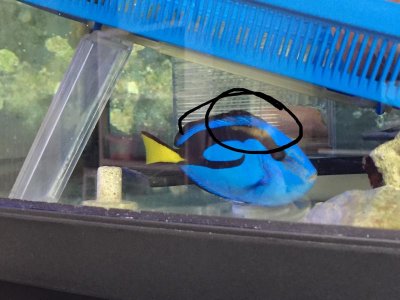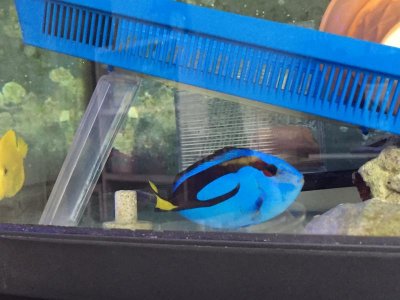Thank. I took the advise not using protein skimmer, and set up the hospital last night:
The hospital is a biocube, 29, all the fishes are in now with the same water from DT to start with. I moved some filter media from DT to HT, added non-seeded bio balls to fill the back chamber, with protein skimmer, I add an air stone to improve oxygenation. Last night, I noticed the blue tang won't sleep. I just moved some smaller live rock from DT to the display tank and created some hiding place for her. Hopefully, she can sleep tonight. this hospital seems too small for all my fishes (1 blue, 1 yellow tang, 3 clownfishes, 3 gobies and 2 firefishes all about 1.5 - 2.5 inches ). I already observed the YWM and all are acting to each other now. But this is all I have. I guess I also need some advise how to combat the aggressiveness in the quarantine periods.
My plan is to leave the DT fallow for 8-10 weeks. meaning all these fishes has to be in the HT for that long, too, why not doing a little more and slower. I think I should have enough time to do both hypersalinity and copper treatment. Bad idea?
My next move will be in 3 days change 20% water. I am thinking just do pure water to dilute the salinity to 1.02. or, maybe I should just start with the copper treatment first?
Lastly, appreciate all the guidance. I did hypersalinity last year once. now ick come back in one year :-( I want to do it right this time.


